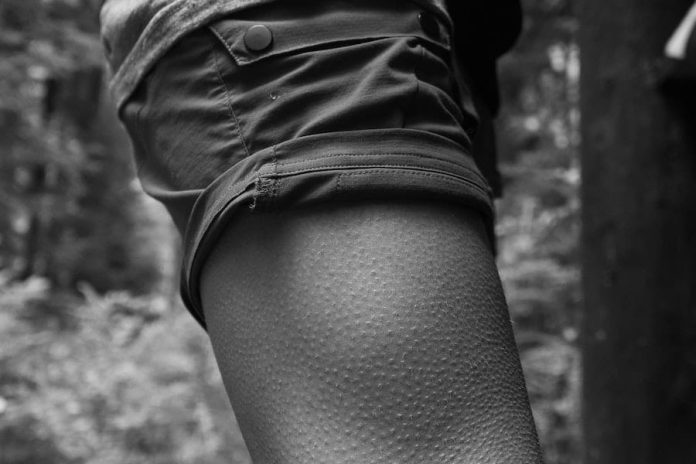Seborrheic keratosis is a common benign skin condition characterized by the growth of waxy, scaly, and slightly raised lesions on the skin’s surface. While it may cause concern due to its appearance, one of the primary concerns among individuals who have had seborrheic keratosis lesions removed is whether or not they will grow back. This essay aims to explore this topic and provide helpful tips surrounding the recurrence of seborrheic keratosis.
What Is Seborrheic Keratosis?
To address the question of whether seborrheic keratosis grows back, it is crucial to understand its nature. Seborrheic keratosis lesions are not cancers nor precancerous growths, so they tend not to metastasize or cause any severe health issues. Consequently, the removal of seborrheic keratosis lesions typically provides a long-term solution. It is essential to consult with a dermatologist who can assess the specific characteristics of the lesion, determine the best course of action, and advise on the likelihood of regrowth.
Recurrence of Seborrheic Keratosis:
Seborrheic keratosis is a common skin condition characterized by noncancerous growths on the skin. While these growths can be removed, there is a possibility of recurrence, meaning new growths may appear over time. Understanding the factors contributing to recurrence and how to manage the condition effectively can be helpful.
Genetic Predisposition: There is evidence to suggest that genetics play a role in the development of seborrheic keratosis. If you have a family history of the condition, you may be more prone to experiencing recurrence.
Sun Exposure: Sun exposure is another significant factor that can contribute to the development of seborrheic keratosis growth. Ultraviolet (UV) radiation from the sun can trigger their formation, and ongoing exposure to the sun can lead to the appearance of new growths over time.
Managing Seborrheic Keratosis to Minimise Recurrence:
While complete prevention of recurrence may not be possible, there are steps you can take to manage seborrheic keratosis effectively:
Regular Skin Examinations: Perform regular self-examinations of your skin to monitor for any changes or new growths. Pay attention to the size, shape, color, and texture of existing growths, and be vigilant for the appearance of any new lesions. Early detection can lead to timely intervention and treatment if necessary.
Sun Protection: Protect your skin from the sun’s harmful UV radiation by:
- Applying sunscreen with a high SPF (Sun Protection Factor) to exposed areas of the skin.
- Wearing protective clothing, such as long sleeves, pants, and a wide-brimmed hat.
- Seeking shade during peak sun hours, typically between 10 a.m. and 4 p.m.
Tips for Managing Seborrheic Keratosis:
In addition to understanding the potential recurrence of seborrheic keratosis, there are several tips you can follow to effectively manage the condition:
Skin Care Routine: Establish a regular skincare routine that focuses on gentle cleansing and moisturizing. Avoid harsh soaps or cleansers that may irritate the skin. Use a moisturizer suitable for your skin type to keep the skin hydrated and help maintain its integrity.
Avoid Scratching or Picking: Resist the urge to scratch or pick at seborrheic keratosis growths, as this can lead to irritation, and inflammation, and potentially increase the risk of infection. If the growths cause itching, consult a dermatologist for appropriate remedies or treatments to alleviate discomfort.
Avoid Trauma or Friction: Be mindful of activities or clothing that may cause friction or trauma to the affected areas. Seborrheic keratosis growths can be delicate and prone to injury, which could lead to bleeding, scarring, or potential infection. Choose loose-fitting clothing and avoid activities that may rub or irritate the growths.
Regular Check-ups: Schedule regular follow-up appointments with a dermatologist to monitor the condition and assess any changes in the growth. They can provide professional guidance on managing seborrheic keratosis and address any concerns you may have.
Education and Awareness: Educate yourself about seborrheic keratosis, its characteristics, and potential triggers. Understanding the condition can help you identify any new growths or changes in existing ones, allowing for early detection and timely intervention, if necessary.
Consideration of Cosmetic Concerns: Seborrheic keratosis growths can be cosmetically bothersome for some individuals. If the appearance of the growth affects your self-confidence or quality of life, discuss cosmetic options with a dermatologist. They can advise on potential treatments or procedures to minimize the appearance of the growths.
Overall Skin Health: Maintain overall skin health by adopting healthy lifestyle habits:
- Protect your skin from the sun’s harmful UV radiation by applying sunscreen, seeking shade, and wearing protective clothing.
- Follow a balanced diet rich in vitamins, minerals, and antioxidants to promote skin health.
- Stay hydrated by drinking an adequate amount of water daily.
- Avoid smoking, as it can have negative effects on skin health.
Remember, these tips are meant to provide general guidance. Consultation with a dermatologist is crucial for personalized advice and to determine the most appropriate management strategies for your specific situation.
In the event that seborrheic keratosis lesions do reappear, it is important not to attempt self-removal or rely on over-the-counter treatments without professional guidance. Self-treatment can lead to complications, scarring, or the misunderstanding of more serious conditions. Dermatologists are trained to evaluate, diagnose, and safely remove these lesions when necessary. Seeking their expertise ensures accurate treatment and minimizes the risk of recurrence.
Conclusion:
seborrheic keratosis lesions typically do not grow back after removal. However, new lesions can develop elsewhere in the body due to the nature of this skin condition. Understanding risk factors, such as age, genetics, and sun exposure, can help individuals take preventive measures. Consulting with a dermatologist for accurate diagnosis, removal, and monitoring is crucial to maintaining overall skin health and managing any potential recurrences. With proper care and vigilance, individuals can minimize the impact of seborrheic keratosis on their skin.


